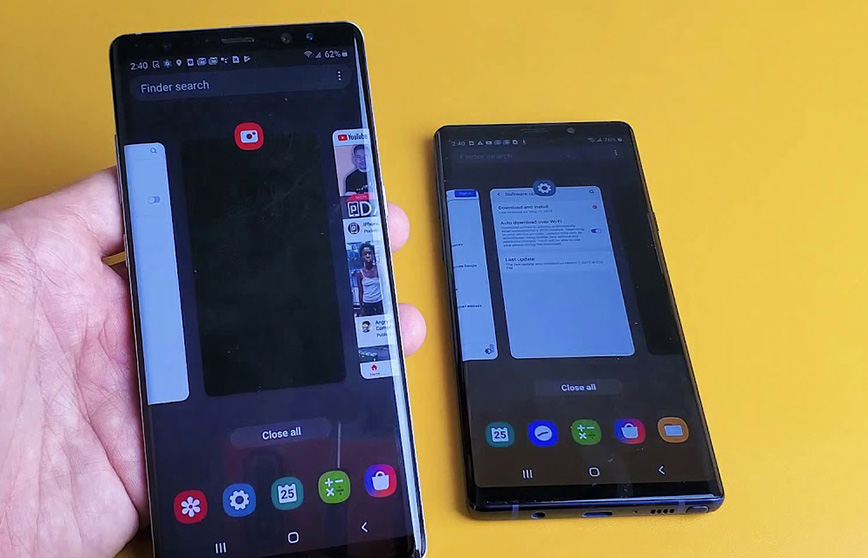How to Close Background Apps on Android Phone/iPhone?
Welcome to Blackview (Well-known brand of rugged phone) blog. Hope this "Background Apps" related guide helps.
Closing background apps can help save battery life, improve device performance, and reduce data usage. While both Android and iPhone devices handle background processes differently, the general steps to close these apps are straightforward. This guide will walk you through the process on both Android and iPhone devices.

Closing Background Apps on Android
1. Understanding Background Apps on Android
Background apps are those that continue to run even after you’ve switched to another app. Android is designed to manage these apps efficiently, but sometimes you might need to close them manually, especially if you notice your device slowing down or draining battery quickly.
2. How to Close Background Apps on Android
Method 1: Using the Recent Apps Button
- Open the Recent Apps Screen:
- On most Android devices, you can access recent apps by tapping the square or three-line button at the bottom of the screen. On some devices, this might be a swipe-up gesture from the bottom of the screen.
- Swipe to Close Apps:
- You’ll see a carousel or list of apps that are currently open. Swipe up or sideways (depending on your device) on each app to close it.
- Clear All (Optional):
- Some devices have a “Clear All” button that closes all recent apps at once. This is usually located at the top or bottom of the screen.
Method 2: Using the Settings App
- Open the Settings App:
- Go to Settings > Apps & notifications.
- Select the App:
- Find and select the app you want to close. You may need to tap on "See all apps" to view the full list.
- Force Stop the App:
- Tap “Force Stop” to close the app immediately. Be cautious, as force stopping apps that are crucial to system performance can cause issues. That is, don't stop system apps.
Method 3: Using Third-Party Apps
- Task Manager Apps:
There are several task manager apps available on the Google Play Store, like Greenify or Advanced Task Manager, that can help you close background apps more efficiently. Phone cleaner apps can also help to do that, here are some best phone cleaner apps for picking out.
3. Should You Close Background Apps?
While it’s useful to close apps occasionally, Android’s operating system is designed to manage background processes effectively. Constantly closing apps might actually reduce performance and increase battery usage due to the need to reopen apps from scratch. Use this feature sparingly.
Related guide,
Closing Background Apps on iPhone
1. Understanding Background Apps on iPhone
iOS is highly efficient in managing background apps. Apps may be frozen or put into a suspended state when not in use, consuming minimal resources. However, if an app is misbehaving or you notice performance issues, closing background apps can be helpful.
2. How to Close Background Apps on iPhone
Method 1: Using the App Switcher
- Access the App Switcher:
- On iPhones with Face ID (iPhone X and later), swipe up from the bottom of the screen and pause in the middle. On iPhones with a Home button, double-click the Home button.
- Swipe to Close Apps:
- You’ll see a series of app cards. Swipe up on each card to close the corresponding app.
- Close All (Not Available):
- Unlike Android, iOS does not offer a "Clear All" option. Each app must be closed individually.
Method 2: Force Quitting Apps
- Open the Settings App:
- Navigate to Settings > General > iPhone Storage.
- Select the App:
- Scroll down and select the app you want to manage.
- Offload the App:
- You can offload apps that you don’t use often. This removes the app but keeps its data.
3. Should You Close Background Apps?
Like Android, iOS is built to manage background apps efficiently. Manually closing apps may not always be necessary and can sometimes lead to longer load times or increased battery usage when reopening apps. It’s generally better to let the system manage apps unless there’s a specific need to close them.
Tips for Managing Background Apps and Enhancing Performance
1. Monitor Battery Usage
Both Android and iPhone have built-in tools to monitor battery usage. You can check which apps consume the most battery and decide if you need to limit their background activity.
- Android: Go to Settings > Battery > Battery usage.
- iPhone: Go to Settings > Battery.
2. Limit Background Activity
You can restrict background activity for specific apps if you want to save battery or data.
- Android: Go to Settings > Apps & notifications > [App Name] > Data usage > Background data and toggle off.
- iPhone: Go to Settings > General > Background App Refresh and disable it for specific apps.
3. Keep Your Software Updated
Software updates often include performance improvements and bug fixes that can help manage background apps better.
- Android: Go to Settings > System > Software update.
- iPhone: Go to Settings > General > Software Update.
4. Restart Your Device Regularly
Restarting your phone occasionally can help clear temporary files and refresh system resources, leading to better performance.
Conclusion
Closing background apps on your Android or iPhone device is simple and can be done through built-in tools or third-party apps. However, both operating systems are designed to manage background processes efficiently, so manual intervention is usually not necessary unless you’re experiencing specific issues. Use these methods wisely to maintain optimal performance and battery life on your device.






